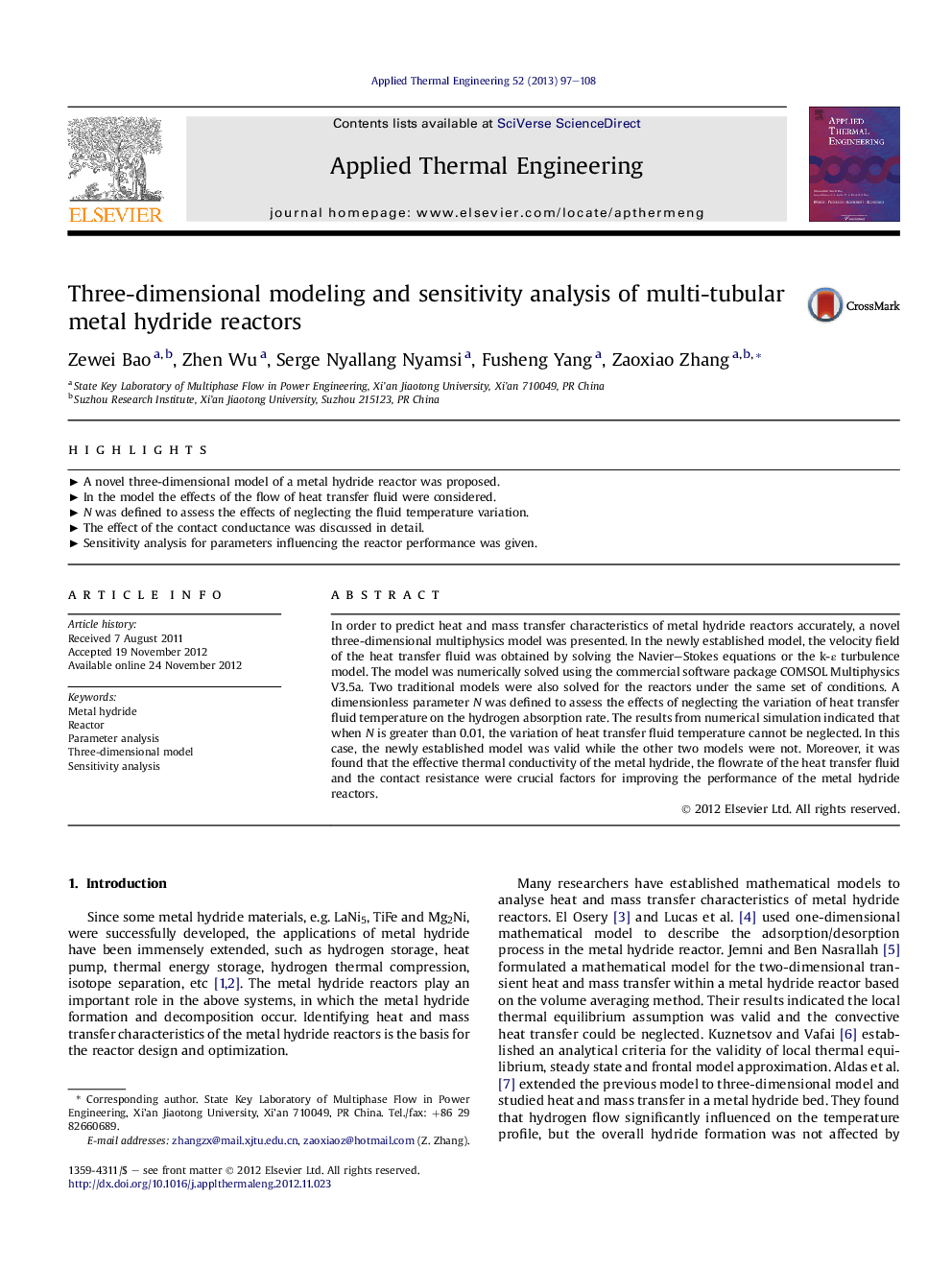| Article ID | Journal | Published Year | Pages | File Type |
|---|---|---|---|---|
| 647135 | Applied Thermal Engineering | 2013 | 12 Pages |
In order to predict heat and mass transfer characteristics of metal hydride reactors accurately, a novel three-dimensional multiphysics model was presented. In the newly established model, the velocity field of the heat transfer fluid was obtained by solving the Navier–Stokes equations or the k-ε turbulence model. The model was numerically solved using the commercial software package COMSOL Multiphysics V3.5a. Two traditional models were also solved for the reactors under the same set of conditions. A dimensionless parameter N was defined to assess the effects of neglecting the variation of heat transfer fluid temperature on the hydrogen absorption rate. The results from numerical simulation indicated that when N is greater than 0.01, the variation of heat transfer fluid temperature cannot be neglected. In this case, the newly established model was valid while the other two models were not. Moreover, it was found that the effective thermal conductivity of the metal hydride, the flowrate of the heat transfer fluid and the contact resistance were crucial factors for improving the performance of the metal hydride reactors.
► A novel three-dimensional model of a metal hydride reactor was proposed. ► In the model the effects of the flow of heat transfer fluid were considered. ► N was defined to assess the effects of neglecting the fluid temperature variation. ► The effect of the contact conductance was discussed in detail. ► Sensitivity analysis for parameters influencing the reactor performance was given.
